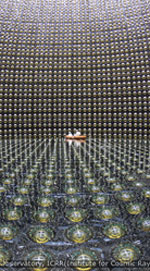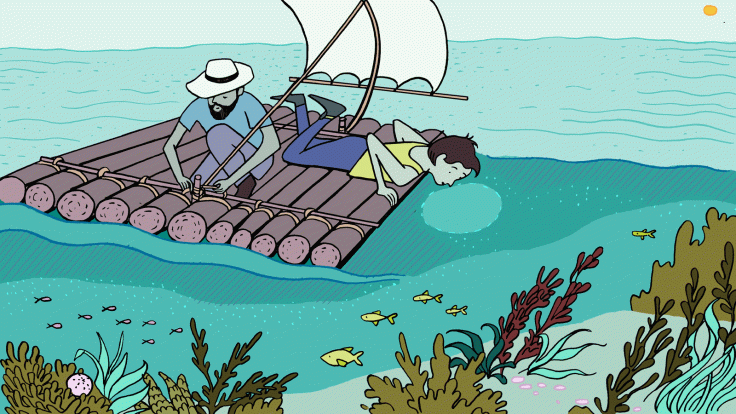Hundreds splash through an artist's neutrino tunnel
 |
| Photo: Super-KamiokandeFrench artist Nelly Ben Hayoun is no stranger to science. Her portfolio of work includes explorations of brain plasticity in snails, a scheme for generating dark matter in a kitchen sink and a recliner in which people can experience the first 10 minutes of a Russian Soyuz rocket's liftoff sequence. |
French artist Nelly Ben Hayoun is no stranger to science. Her portfolio of work includes explorations of brain plasticity in snails, a scheme for generating dark matter in a kitchen sink and a recliner in which people can experience the first 10 minutes of a Russian Soyuz rocket's liftoff sequence.
She may have outdone herself with her latest project, though. For Super K Sonic Booooum (top photo), she constructed a flashy version of Japan's Super-Kamiokande neutrino observatory in London's Shunt Lounge, a labyrinth of abandoned railway tunnels beneath the London Bridge train station that's been turned into an underground performance space.
“I'm really obsessed with large-scale scientific experiments,” Hayoun says. “The project was born from the idea of giving everyone access to the Super-K detector.”
The installation consisted of a 49-foot-long channel filled with nearly 4000 gallons of water and lined with 600 balloons representing Super-K's thousands of photomultiplier tubes (left photo). Visitors rowed through two at a time in a small dinghy, accompanied by physicists from Imperial College London and Queen Mary, University of London. Every 10 minutes, loud booms and bright flashes of blue light simulated interactions between incoming neutrinos and the atoms of water—the events that the real Super-K is designed to detect.
There was no question about the installation's popularity. According to physicist Francesca di Lodovico of Queen Mary, one of the presenters at Super K Sonic Booooum, people lined up for more than an hour to go through the faux observatory. Fifteen hundred attended during an 11-day run in November. “It was really amazing,” she says.
Nicholas Bock
Click here to download the pdf version of this article.






